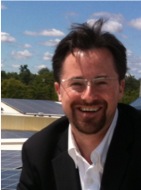
Abstract
Given the terawatt scale of future energy needs, the most promising future photovoltaic materials should be Earth abundant with their primary mineral resources distributed across several geographic regions and their supply chains robust to reduce concerns of price volatility. In addition, the process of forming the solar cell should be scalable, low-cost, and not utilize dangerous or toxic materials. The strongest initial candidate appears to be kesterite structures of Cu2ZnSnS4 (CZTS) and similar materials. The presentation will review the progress in developing photovoltaics devices based on these materials and our group’s recent experimental and modeling results. CZTS thin film solar cells have historically been synthesized by evaporating or sputtering metals (Cu, Zn, & Sn) followed by sulfurization or selenization. More recently, two potentially low-cost high-throughput approaches have been demonstrated that form the quaternary or pentenary chalcogenide directly from solution-phase processes. One is based on first synthesizing multinary sulfide nanocrystals and then sintering them to form a dense layer. The other approach utilizes molecular precursors dissolved in hydrazine. Both new approaches reach their highest device efficiencies by incorporating Se to form Cu2ZnSn(Sx,Se1-x)4 devices, and each has yielded substantially higher efficiency devices than the best vacuum deposited absorbers. The hydrazine route has yielded the most efficient CZTS-based devices thus far. The presentation will highlight our recent progress in CZTS-based solar cells from nanocrystal-inks and new non-hydrazine molecular-inks developed in our lab.
Biography
Hugh Hillhouse is a Professor in the Department of Chemical Engineering at the University of Washington and currently holds the Harry A. and Metta R. Rehnberg Endowed Chair, which is the oldest endowed chair in the College of Engineering. He is a member of the Molecular Engineering & Sciences Institute and the Advanced Materials of Energy Institute at UW. He received his Bachelor’s degree in Chemical Engineering from Clemson University in 1995. He earned a Master’s degree in Chemical Engineering from the University of Washington in 1996 while studying colloidal phenomena under John Berg and then earned a Master’s degree in Physics and a Doctorate in Chemical Engineering from the University of Massachusetts in Amherst in 2000, working with Michael Tsapatsis and Jan van Egmond on the self-assembly of nanostructured thin films. After an NSF International Postdoctoral Fellowship at the Kavli Institute for Nanoscience at Delft University in the Netherlands working with Teun Klapwijk on organic semiconductors, he joined the School of Chemical Engineering at Purdue University in 2002. While working on nanomaterials for energy conversion devices, he attained the rank of Associate Professor in 2007 and the title of University Faculty Scholar in 2009. He spent a year on sabbatical at the National Renewable Energy Laboratory in Golden Colorado working with Matt Beard and Art Nozik on multiple exciton generation and quantum dot solar cells, and then moved to the University of Washington in 2010. He has received the CAREER Award from the National Science Foundation, the Early Career Research Excellence Award from Purdue, the Shreve Award for Excellence in Undergraduate Teaching, and was honored with the Outstanding Young Alumni Award from Clemson University and the Sharma Medal from the Indian Institute of Chemical Engineers. He is on the editorial board for Chemistry of Materials, and his research and teaching interests lie at the nexus of nanotechnology and solar energy conversion. Currently he is focused nanomaterials chemistry and molecular engineering of novel solution processed solar cells from Earth abundant resources.